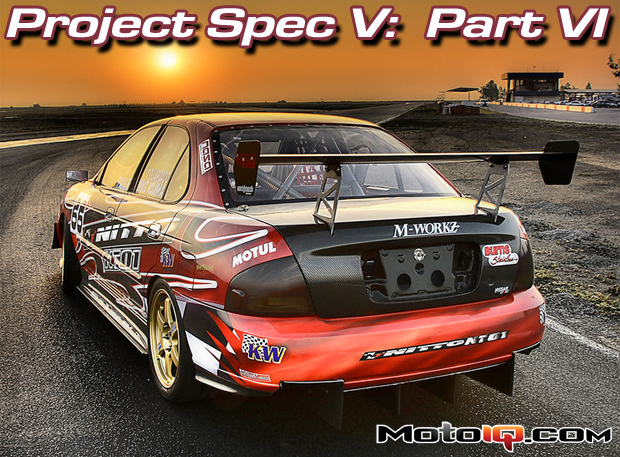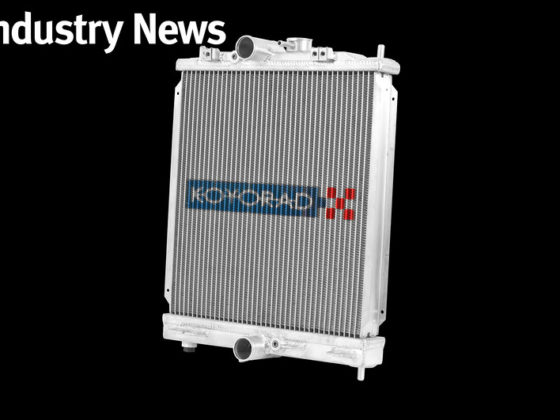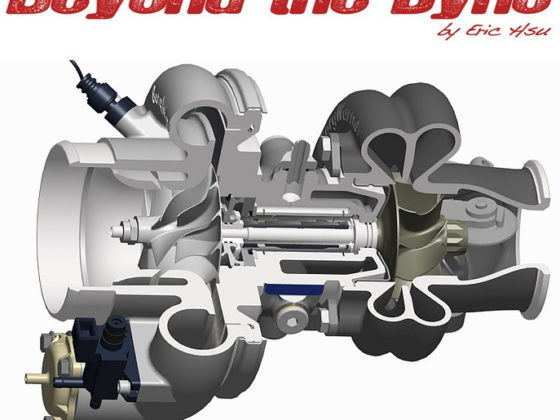,
Finally we filled and bled our brake system with Motul RBF 600 brake fluid. Motul brake fluid has excellent high temperature properties, resisting boiling at very high temperatures.
 |
| Motul 660 brake fluid is relatively inexpensive with great performance. |
With the brakes installed we check fitted our wheel of choice the Volk by RAYS TE37 in 17×8” with a 38mm offset. As you can see here the wheels easily cleared our brakes. These forged wheels are ultra strong and light, in our opinion one of the best racing wheels on the market.
To create these light, yet strong wheels, RAYS has developed multiple manufacturing processes to achieve this goal. For the ultimate in performance, RAYS creates its forged wheels with a forge press that forms the metal with 10,000-tons of pressure! Another process is RM8000, using open-die, spin forming technology. Committed to quality, RAYS has ISO9001 certification and TUV marks for various European market products.
 |
| 17x 8″ 38mm offset Volk TE37’s in Top Secret yellow are light and strong. |
Forging also refines the grain of the metal through a phenomenon called cold working which improves the strength and other mechanical properties. Like wood, metal also has a grain and the forging process aligns the grain to the geometry of the part which also imparts strength and durability. Forging also increases the metals ductility meaning that if the wheel is subjected to a catastrophic impact, the forged wheel will most likely bend and retains most of its structural integrity instead of cracking or shattering like a cast wheel probably will.
With our suspension and brakes coming together, it will be soon time to focus on the engine.
Sources




4 comments
Hey guys. This build seems to be highly… outsourced. Like, HotRod PowerTV outsourced. I don’t mind that you spend some money to get these things done, or talk with experts who are highly paid when they get some things done, but some research and reporting on your decision-making might help make it look less sponsored and may help out people with a smaller budget.
In the case of B15 brakes, admittedly the single piston calipers are the WORST, as are the crappy quality rotors. Did you put any consideration into the ’04+ B15 Brembo front setup with some decent pads? What, ultimately, pushed you toward the StopTech kit? Were any other kits commercially available? Were there any kits that would address the garbage stock rear calipers with poorly-chromed pistons?
Also, possibly helpful would be published dates on your articles. I’m not sure if I’m responding to an article from 10 years ago or not here…
This is a race car, not a cheap car. We don’t care if it “looks sponsored”. Stoptech calipers are the best for stock hydraulic systems bar none due to their wide range of piston sizes. I am not sure what you are talking about when you say outsourced, there are a lot of in-house designed and fabricated parts in this car.
You sound a little defensive. I guess I’ll have to explain better?
If you watch HotRod PowerTV, it becomes pretty obvious that they aren’t actually informative shows so much as they’re paid plugs for the products showcased in each episode. In this way, the work is both sponsored, and outsourced. Bolt-ons, if you will. This isn’t to say I’m against bolt-on modifications, especially with something so critical as a braking system, but knowing more of your thought processes would be nice.
If you had a decision making process, perhaps laying it out in the article would help people reading understand what’s going on. You say “Stoptech calipers are the best for stock hydraulic systems bar none due to their wide range of piston sizes.” and two things immediately come to appear. You’ve stated one objective fact that supports your opinion (their wide range of piston sizes), and one outrageous opinion that does nothing to support your decision (best, hands-down).
If Stoptech sponsored, use journalistic integrity and disclose it. If you didn’t, and want to expand further on how you arrived at using their calipers, feel free to do so (heck, “They’re the only ones who make a kit” is even an okay answer). Do it in the article, even. The fact that you’ve “decided” in the TECH article without explaining the decision-making process doesn’t help your readers learn from the article. A good nugget here would have been a primer on brake balance and bias, and the importance of maintaining a relatively stock f/r area ratio… I appreciate your criticism of the stock, lo-perf, 1-piston calipers. They’re junk. They need to be replaced for a safe, functional car.
I’ll also reiterate: Did you consider the ’04+ Brembo systems? Should there be something I’m concerned with when *I* choose to go with the factory Brembo setup? Problems with track-day heat rejection, etc?
Did you research any systems that replaced the REALLLY BAAAD rear calipers with anything more reliable? Hell, if you’re plugging Stoptech, and they have a replacement, tell me THAT, even.
Not defensive, but I am annoyed at the journalistic integrity shots. I am pretty sure people are not interested in the extreme details of my decision-making process in this type of article, a primer on brake balance and bias is a huge digression from an article about building a car, it’s a whole new article. For an idea on how Stoptech does validation to determine proportioning read this. This too. Stoptech has 32 different piston sizes and since I didn’t want to go to a pedal box and balance bar, this is the best way to put a front brake with a significantly larger than factory Brembo front rotor and pad volume in while still maintaining proper proportioning. There is nothing outrageous about this and it’s not an opinion, its a fact. I also wanted to have a floating front rotor to reduce piston knockback and a lighter 2-piece rotor, not available with the factory Brembo stuff. I have been competing in road racing with the Sentra platform for years and the factory rear brakes are completely adequate and reliable. A FWD race car doesn’t use much rear brake and for instance, the rear pads can easily last for a couple of seasons. In my opinion, the only reason to change to a two piston race caliper on these cars would be for less weight and the abilty to choose from a wider assortment of brake pads. Or to have a more reasonable rear master cylinder size so the balance bar can be staged straighter if using a pedal box, dual master cylinders, and a balance bar. Oem single piston rear brakes can be used on pretty extreme FWD race cars. The record-breaking Spoon Civic and the all-dominating PZ Tuning Civic both use stock rear brakes.